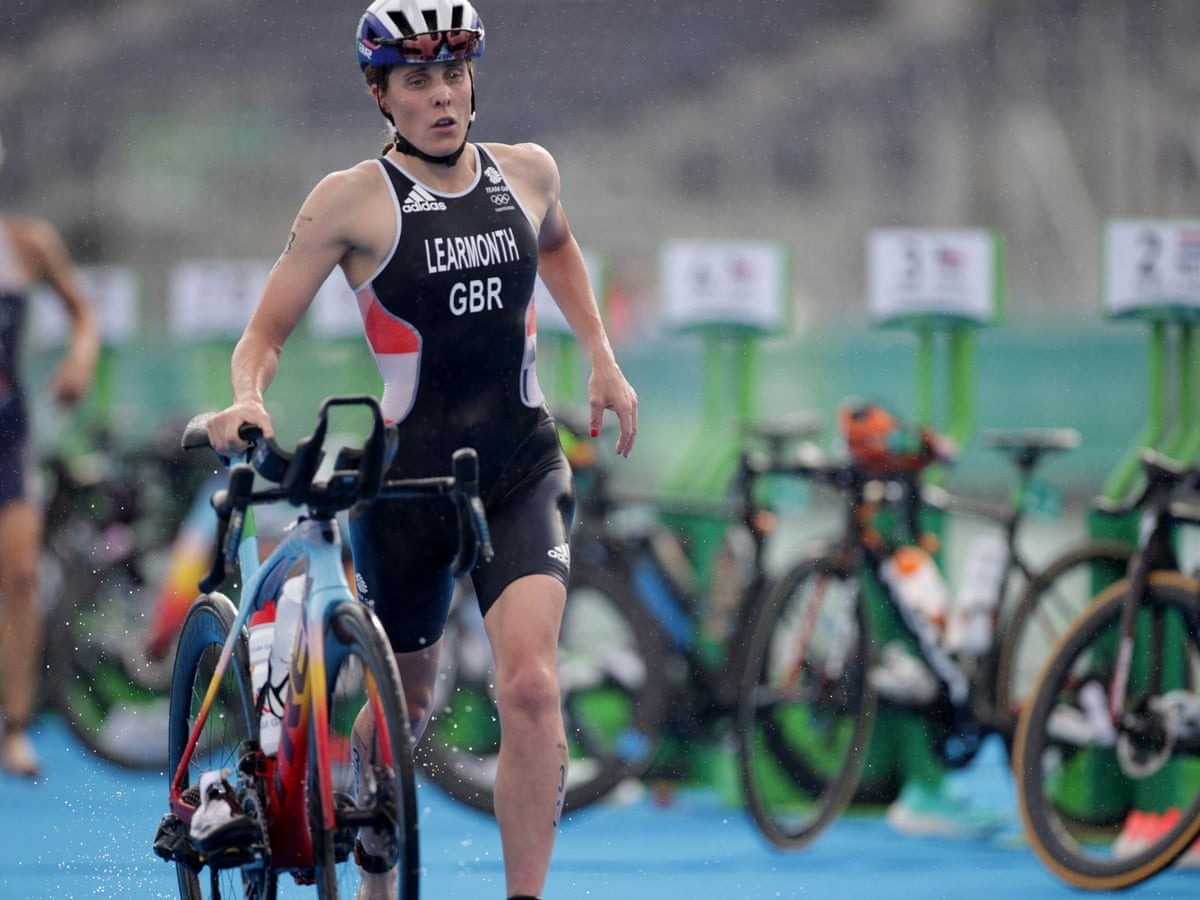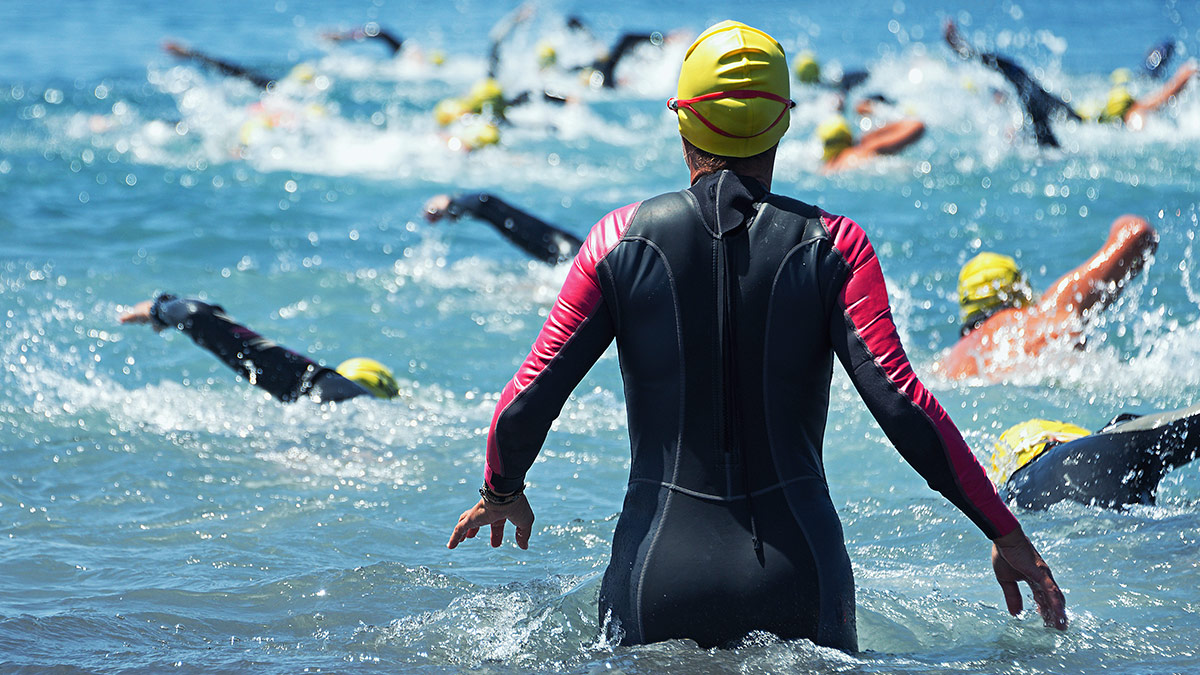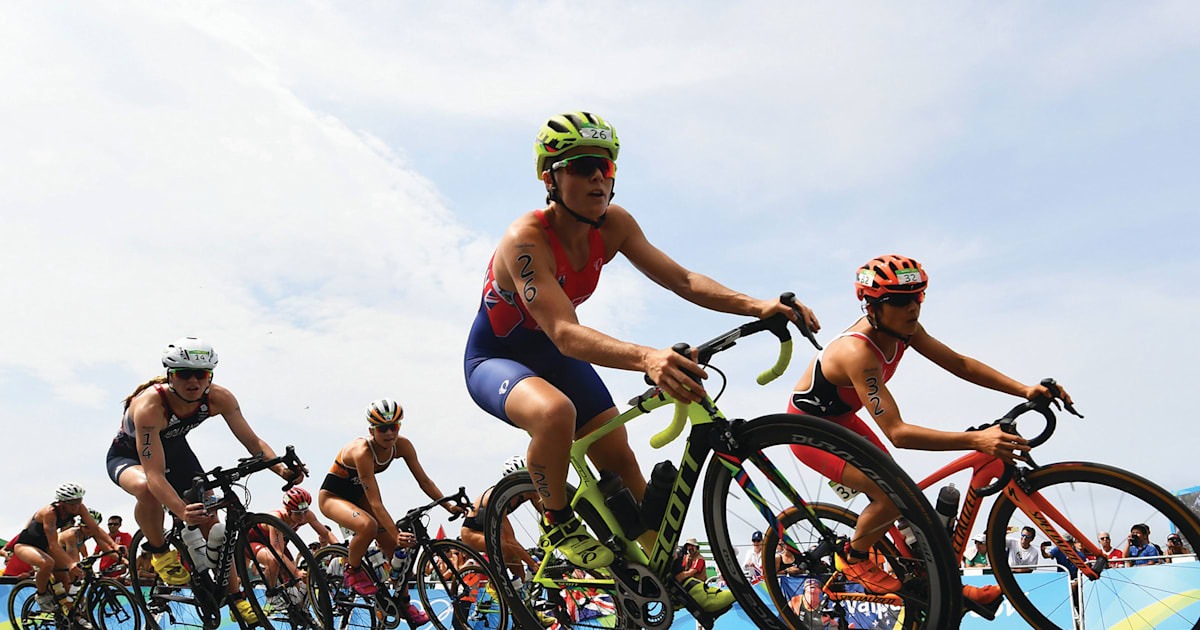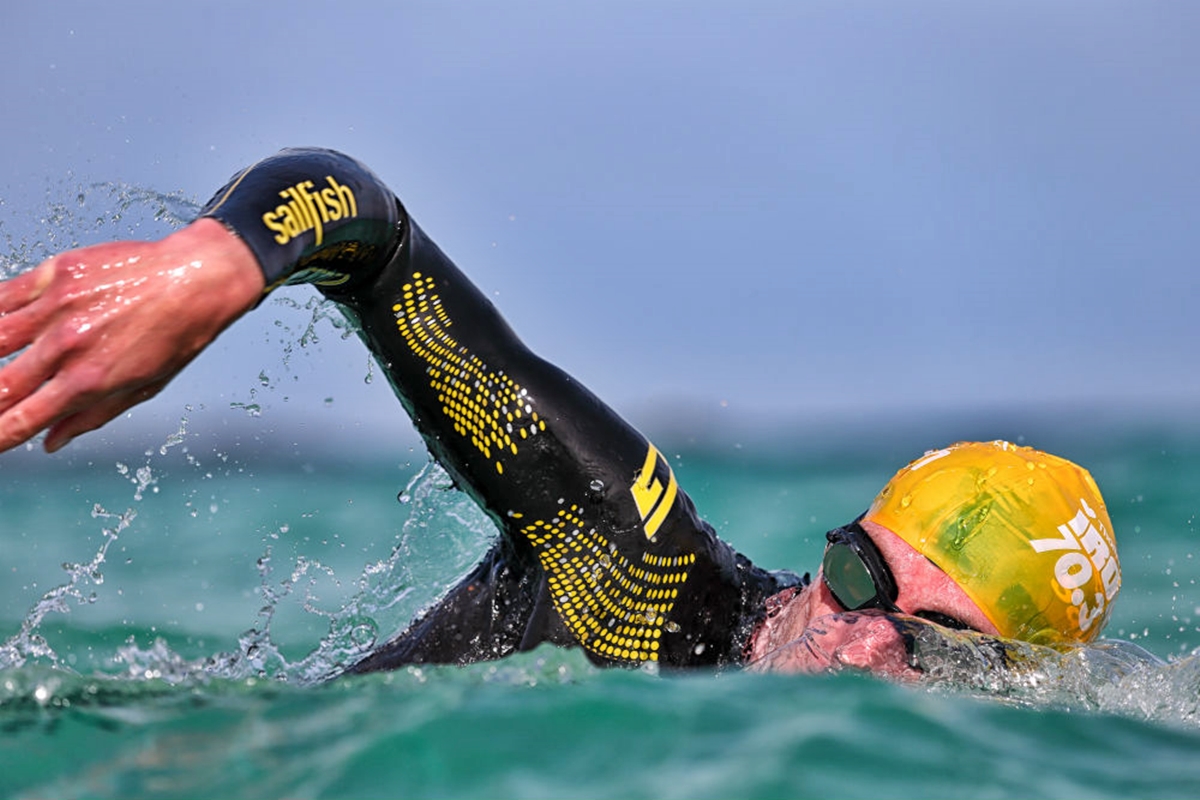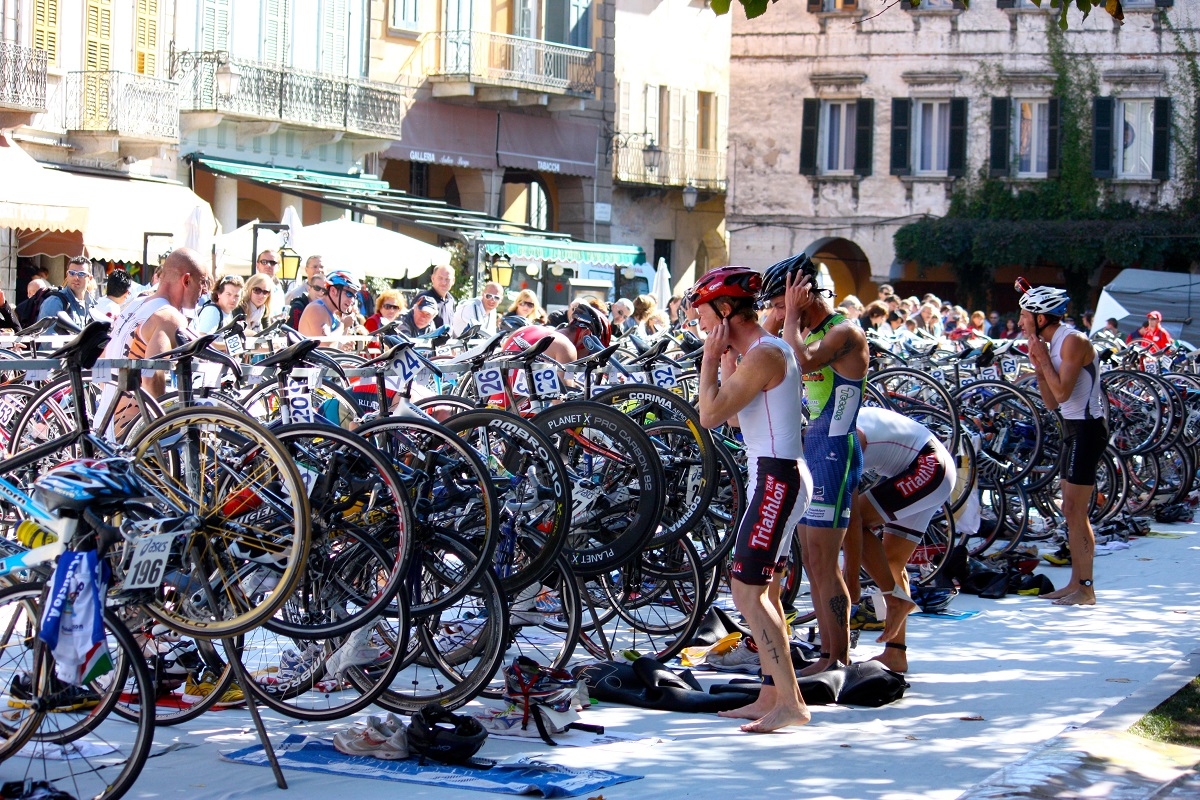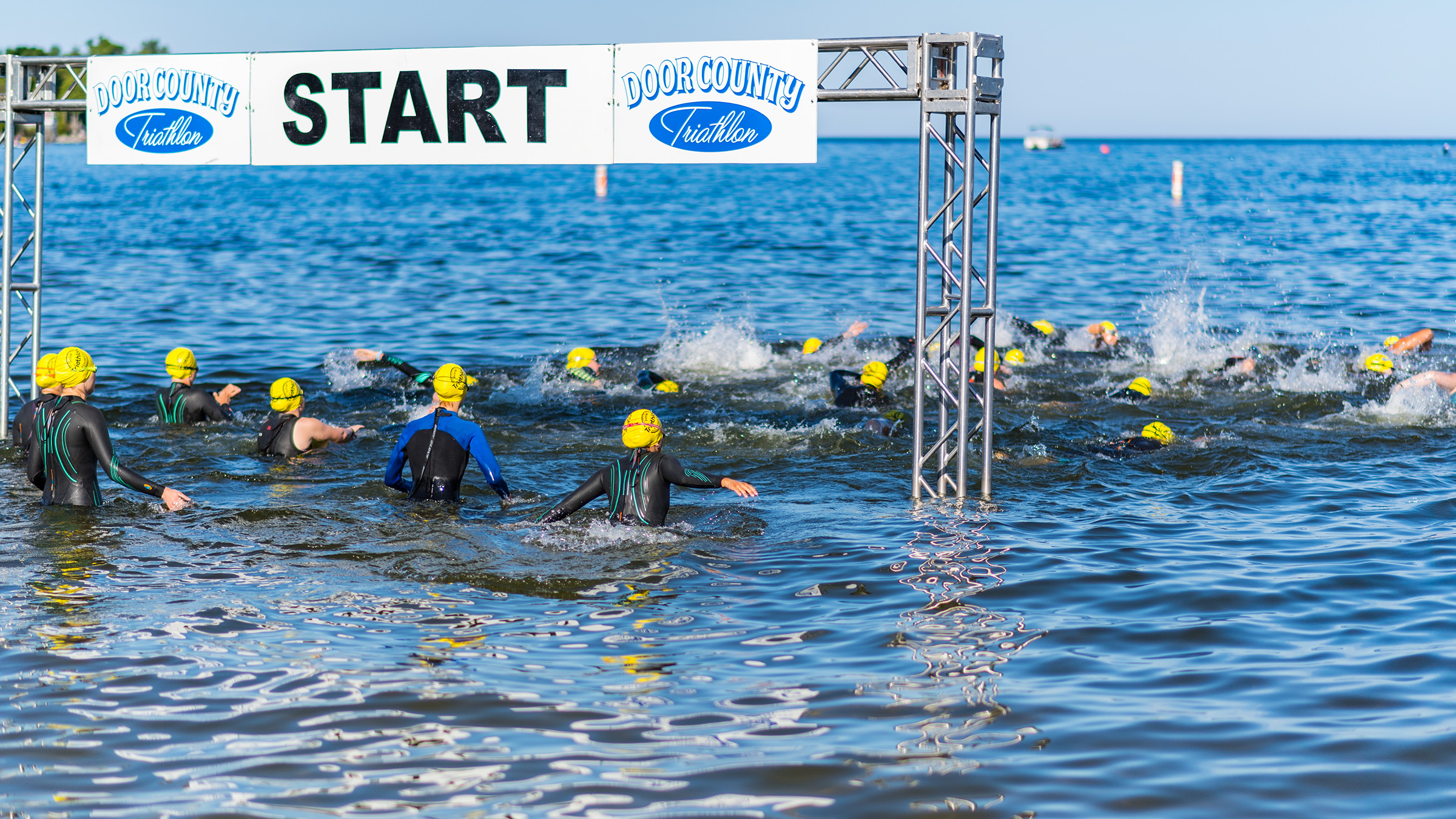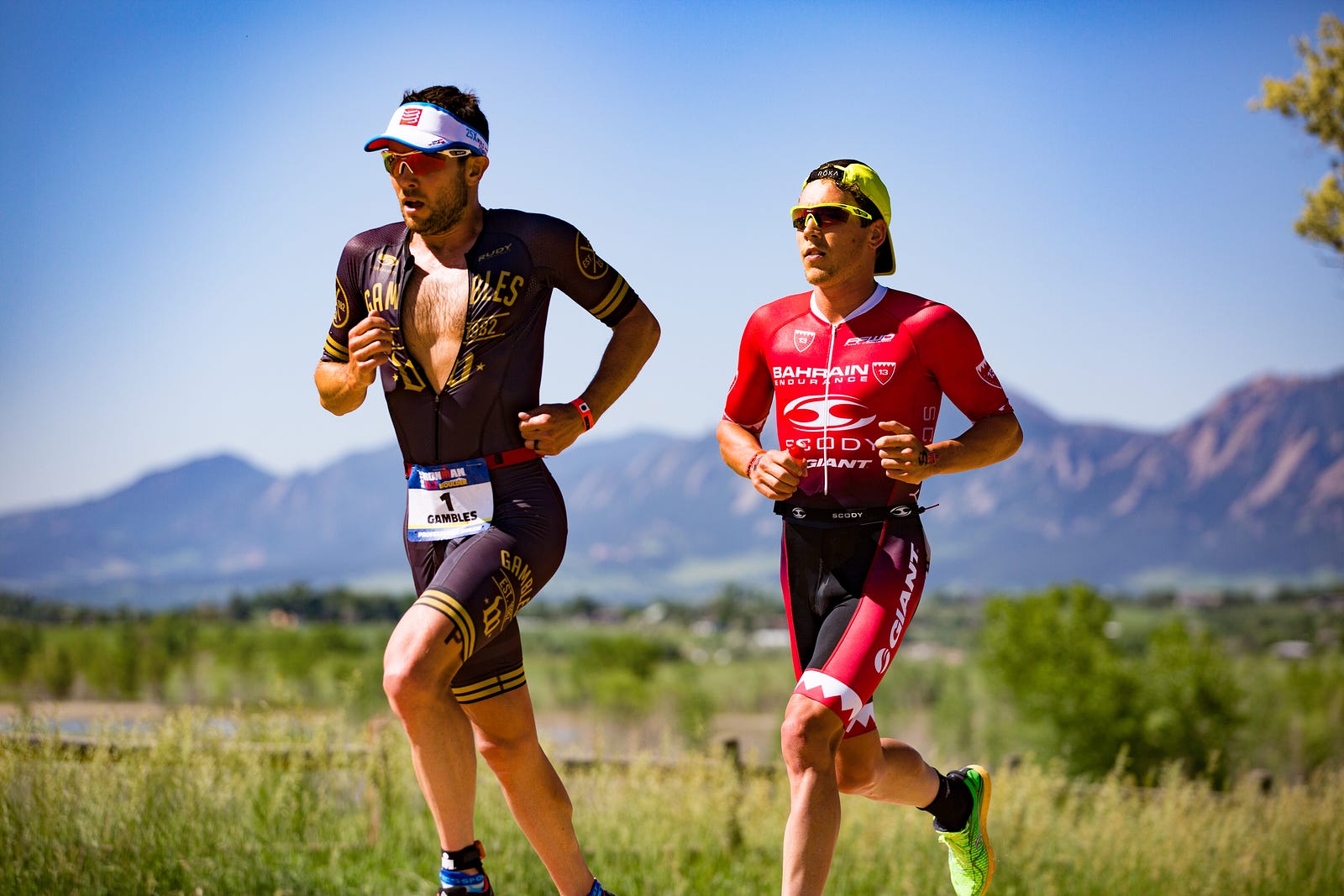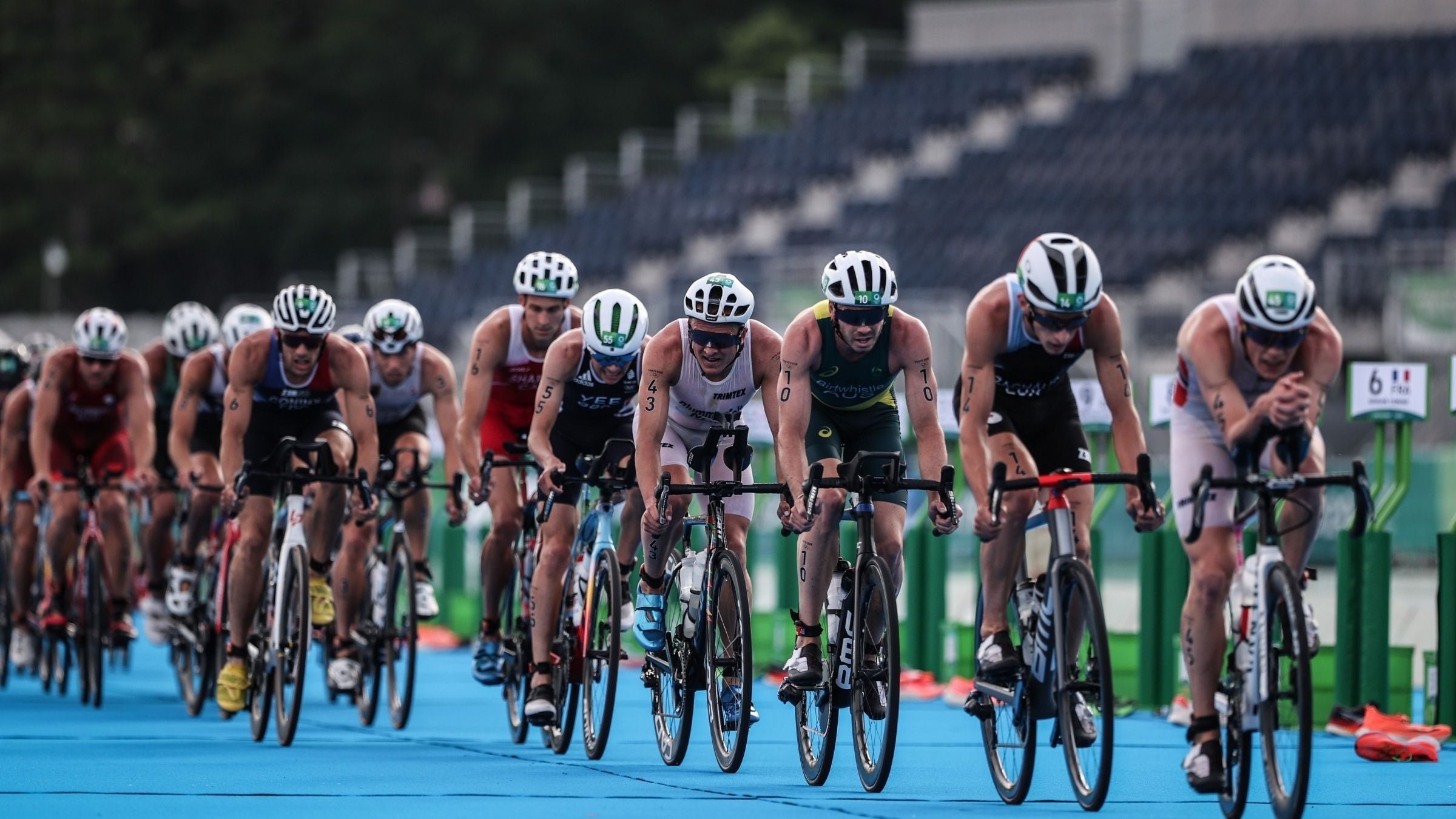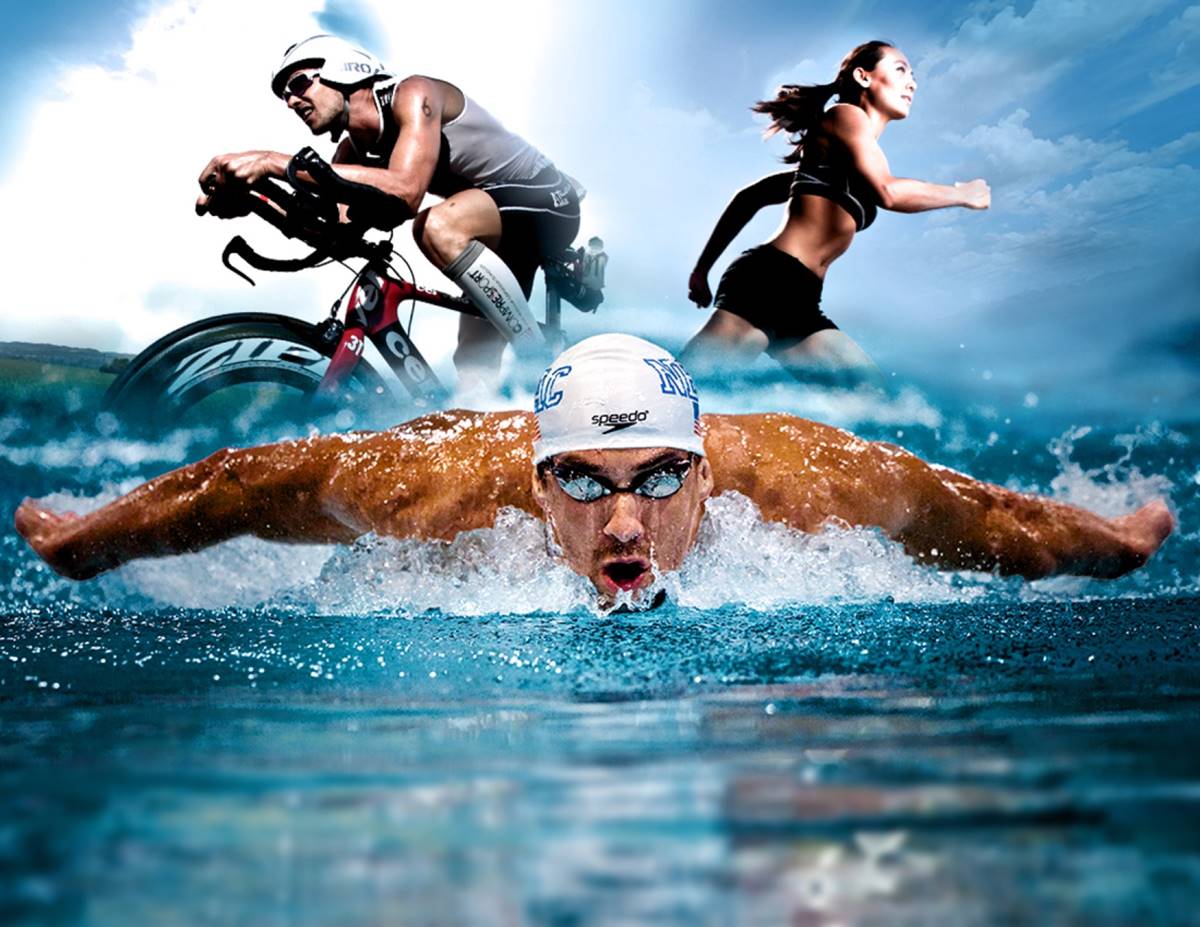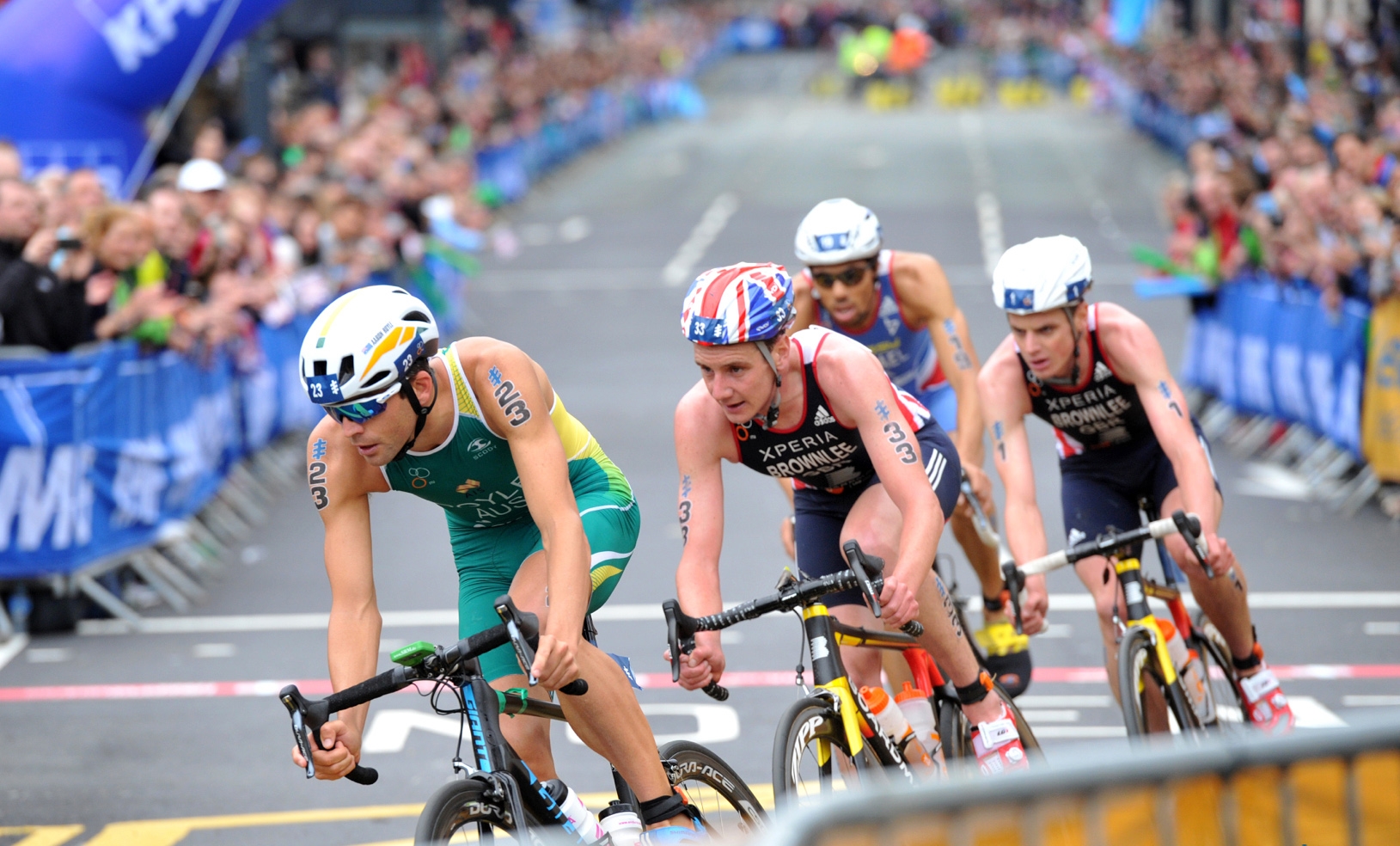

Featured
What Is The Olympic Triathlon Distance
Modified: January 2, 2024
Discover the featured Olympic triathlon distance and learn about the challenging course that athletes will conquer in this ultimate test of endurance.
Introduction
Welcome to the exciting world of Olympic triathlons! If you’re looking for a thrilling and challenging event that tests your endurance and multidisciplinary skills, then the Olympic triathlon is the perfect fit for you. In this article, we will explore the history, distance, and components of this captivating sport.
The Olympic triathlon is a multisport event that combines swimming, cycling, and running into one exhilarating race. It gained international recognition in 2000 when it was first introduced as an Olympic sport. Since then, it has captivated athletes and spectators alike with its intensity and fierce competition.
This triathlon is not for the faint of heart. It requires athletes to push their physical and mental limits to complete the demanding course. From the swim leg through the bike leg and onto the run, participants must navigate various challenges in different terrains.
The Olympic triathlon is the standard distance used in international competitions, providing a level playing field for athletes from around the world. It has become a true test of athleticism and an opportunity for individuals to showcase their skills on the global stage.
In the following sections, we will delve deeper into the rich history of the Olympic triathlon, explore the specific distances for each leg, and discuss the training required to participate in this extraordinary event. So, let’s dive in and discover everything there is to know about the Olympic triathlon!
History of the Olympic Triathlon
The Olympic triathlon has a relatively short but fascinating history. It made its debut as an Olympic sport in the year 2000 at the Sydney Summer Olympics. However, the origins of triathlon can be traced back to the 1970s.
The idea of combining swimming, cycling, and running into a single event is credited to the San Diego Track Club. In 1974, members of the club organized the first-ever triathlon, known as the Mission Bay Triathlon, which attracted a small group of enthusiastic participants.
As interest in the sport grew, the inaugural Ironman Triathlon was held in Hawaii in 1978, showcasing the incredible endurance required to complete a grueling 2.4-mile swim, 112-mile bike ride, and 26.2-mile run. This event sparked further enthusiasm for triathlon and set the stage for its future development.
Over the next two decades, triathlon gained popularity as a recreational and competitive sport. It began to attract athletes from various backgrounds, including swimmers, cyclists, runners, and even those new to endurance sports.
The International Triathlon Union (ITU) was established in 1989 as the governing body for the sport, aiming to promote and develop triathlon on a global scale. The ITU played a crucial role in gaining recognition for triathlon as an official Olympic sport.
In 1994, the International Olympic Committee (IOC) announced that triathlon would be included in the Sydney Summer Olympics held in 2000. This decision elevated the sport to a new level of significance, attracting world-class athletes and bringing triathlon to a wider audience.
Since then, the Olympic triathlon has become a highly anticipated event at every Summer Olympics. It showcases the dedication, skill, and determination of athletes from all corners of the globe.
With its rich history and continued growth in popularity, the Olympic triathlon has firmly established itself as a thrilling and prestigious event, inspiring countless individuals to take up the challenge and compete in this ultimate test of physical and mental endurance.
The Olympic Triathlon Distance
The Olympic triathlon follows a standardized distance format for each leg of the race. This ensures fair and consistent competition among athletes, regardless of the venue or race organizer.
The total distance covered in an Olympic triathlon is 51.5 kilometers, or approximately 32 miles. It is divided into three distinct legs: swim, bike, and run.
The swim leg is the first part of the race and covers a distance of 1.5 kilometers, or approximately 0.93 miles. Athletes dive into the water and navigate through open water, typically in a lake, river, or ocean, depending on the race location. They must display efficient swimming technique and endurance to complete this portion of the race.
Following the swim, competitors transition to the bike leg. This leg covers a distance of 40 kilometers, or approximately 24.85 miles. Athletes hop on their bicycles and navigate through a designated course, which can vary in terrain. The bike leg requires not only physical strength but also strategic decision-making, as athletes must pace themselves and conserve energy for the final leg.
The third and final leg is the run. Athletes transition from the bike to the run, covering a distance of 10 kilometers, or approximately 6.2 miles. This leg is often regarded as the most challenging, as it comes after an intense swim and bike. Athletes must showcase their endurance and mental resilience as they push through fatigue to reach the finish line.
The Olympic triathlon distance is carefully balanced to test athletes’ overall fitness and versatility. It combines the cardiorespiratory demands of swimming, cycling, and running, requiring athletes to possess strength, endurance, and stamina in all three disciplines.
While the Olympic triathlon distance is standardized, it is worth noting that certain races or events may feature variations in course layouts or distances. However, in the Olympic Games, this specific distance structure is followed to ensure fairness and consistency among all competing athletes.
Now that we’ve explored the distance covered in the Olympic triathlon, let’s take a closer look at each leg of the race and the unique challenges they present.
Swim Leg of the Olympic Triathlon
The swim leg is the opening stage of the Olympic triathlon and sets the tone for the entire race. It challenges athletes to showcase their swimming skills, endurance, and ability to navigate through open water.
During the swim leg, athletes cover a distance of 1.5 kilometers, or approximately 0.93 miles. The swim takes place in open water, such as a lake, river, or ocean, depending on the race location. Athletes must tackle factors such as current, waves, and visibility, which can add an additional level of complexity to the swim.
Competitors typically start the swim by diving into the water, and the race may employ a mass-start or a wave-start format, depending on the number of participants. In a mass-start, all athletes begin swimming at the same time, while in a wave-start, athletes are divided into groups and start at intervals to avoid overcrowding.
Swimming in open water requires a unique set of skills compared to swimming in a pool. Athletes must adapt to the unpredictable conditions, maintain a straight line, and navigate around buoys that mark the course. It is essential to practice open water swimming before competing in an Olympic triathlon to gain confidence and develop the necessary techniques.
In addition to physical stamina, mental resilience plays a significant role in the swim leg. Athletes must overcome any anxiety or nerves associated with swimming in open water, stay focused on their race strategy, and conserve energy for the remaining legs of the triathlon.
Furthermore, mastering efficient swimming technique is crucial for a successful swim leg. It is essential to find a stroke and breathing pattern that maximizes speed and minimizes energy expenditure. Proper body position, rhythmic breathing, and strong kicks all contribute to swift and efficient swimming.
Transitioning from the swim leg to the next stage of the race, known as T1 (transition 1), requires a quick change from a wetsuit (if worn) to cycling attire. Athletes must efficiently remove their wetsuit, put on their bike gear, and be ready to mount their bicycles swiftly and smoothly.
The swim leg of the Olympic triathlon poses a unique challenge in the race, demanding a combination of physical fitness, technical skills, and mental fortitude. It sets the stage for the rest of the event and serves as the foundation on which the athletes build their performance throughout the race.
Now that we have explored the swim leg of the Olympic triathlon, let’s move on to the next leg – the bike leg – where athletes transition to cycling to continue their journey towards the finish line.
Bike Leg of the Olympic Triathlon
The bike leg is the second stage of the Olympic triathlon, following the swim leg. It tests athletes’ cycling abilities, endurance, and strategic decision-making as they navigate the course on their bicycles.
Athletes cover a distance of 40 kilometers, or approximately 24.85 miles, during the bike leg. This portion of the race is conducted on a designated course, which can vary in terrain, including flat sections, climbs, descents, and technical turns.
One of the primary objectives of the bike leg is to maintain a high average speed while conserving energy for the final run leg. Athletes must find the right balance between exertion and efficiency, adapting their effort based on the course profile, wind conditions, and their own capabilities.
During the bike leg, competitors ride specialized road or triathlon bikes, designed to optimize aerodynamics and speed. These bikes feature aero bars, which allow athletes to assume a more streamlined position, reducing wind resistance and enhancing their overall speed.
Strategy plays a crucial role in the bike leg, especially when faced with hilly or technical sections. Athletes must decide when to push their pace, when to conserve energy, and how to manage their effort throughout the race. This requires knowledge of their own fitness levels, the course profile, and an understanding of how to navigate difficult sections effectively.
Furthermore, nutrition and hydration are essential during the bike leg to maintain performance and prevent fatigue. Athletes rely on energy gels, sports drinks, and snacks to replenish their glycogen stores and stay hydrated throughout the race.
Transitioning from the bike leg to the run leg, known as T2 (transition 2), requires efficient dismounting, securing the bike in the transition area, and quickly changing into running shoes. Athletes must mentally prepare themselves for the running segment while physically readjusting to a new mode of movement.
The bike leg of the Olympic triathlon demands a combination of physical strength, strategic thinking, and endurance. It provides an opportunity for athletes to showcase their cycling prowess while preparing them for the final leg of the race.
Now that we have explored the bike leg of the Olympic triathlon, let’s move on to the final stage – the run leg, where athletes put their running skills to the test to cross the finish line.
Run Leg of the Olympic Triathlon
The run leg is the final stage of the Olympic triathlon and is arguably one of the most challenging parts of the race. After completing the swim and bike legs, athletes must summon their remaining energy to cover a distance of 10 kilometers, or approximately 6.2 miles, on foot.
The run leg presents a different set of challenges compared to the previous stages. Athletes must transition from the cycling motion to running, which requires a shift in muscle activation and a mental adjustment to a different mode of movement.
The run leg is usually conducted on a designated course, which can vary in terrain. Athletes may encounter road surfaces, grass, trails, and inclines during this portion of the race. They must adapt their running technique and pace to the conditions they face, aiming to maintain a steady rhythm and a sustainable effort.
One of the crucial aspects of the run leg is managing fatigue accumulated from the preceding swim and bike legs. Athletes must dig deep and find the mental strength to push through any exhaustion or discomfort they might be experiencing at this point in the race.
Effective pacing is essential during the run leg. Athletes must strike a balance between pushing their limits to maintain a strong pace and conserving energy to ensure they have enough left to finish the final kilometer. Improper pacing can lead to premature fatigue or a late surge that may be too little, too late.
The run leg also demands mental toughness and focus. Athletes may encounter moments of doubt or negative thoughts, but they must stay mentally strong and maintain a positive mindset. Drawing on their training and previous race experiences can provide the mental fortitude needed to overcome these challenges.
Hydration and nutrition remain essential during the run leg. Athletes often rely on aid stations strategically placed along the course to replenish fluids and consume energy gels or snacks to maintain their energy levels.
As athletes approach the final stretch of the run leg, the atmosphere at the finish line becomes increasingly palpable. The crowd’s cheers and the prospect of completing the race can inject a burst of energy and motivation, propelling athletes toward the finish line.
Completing the run leg signifies the culmination of an arduous journey, reflecting the sheer determination and resilience of Olympic triathletes.
Now that we have explored the run leg of the Olympic triathlon, let’s move on to the importance of transition areas in the race, where athletes prepare themselves for the next leg and make efficient switches between disciplines.
Transition Areas in the Olympic Triathlon
Transition areas play a crucial role in the Olympic triathlon, serving as the hub where athletes switch between different legs of the race. These areas, often referred to as T1 and T2, are where athletes make rapid transitions from swimming to cycling and from cycling to running, respectively.
T1, or the first transition area, is where athletes move from the swim leg to the bike leg. As athletes exit the water, they head towards the transition area, which is set up with racks for bikes and individual spots for each athlete. In T1, athletes quickly remove their wetsuits (if worn) and put on their cycling gear, including helmets, shoes, and any other necessary accessories.
Efficiency and organization are key in T1. Athletes aim to make swift transitions, ensuring that they waste minimal time changing and preparing for the bike leg. Practicing transitions beforehand helps athletes streamline their movements and develop muscle memory, allowing them to transition smoothly without losing precious seconds.
Once athletes complete the bike leg, they enter T2, the second transition area. In T2, athletes dismount from their bikes and transition into their running gear. This involves removing cycling shoes and helmet, and putting on running shoes and any additional apparel required.
Similar to T1, speed and efficiency are essential in T2. Athletes strive to minimize time spent in transition, allowing them to maximize their running performance. Each second saved in the transition area can make a significant difference in their overall race time.
To navigate the transition areas smoothly, athletes often lay out their gear in a specific order, ensuring everything they need is easily accessible. By having a well-organized transition area, athletes can quickly and seamlessly transition from one leg to the next, minimizing disruptions to their race rhythm.
In addition to the physical setup, mental preparation is vital in the transition areas. Athletes must remain focused and calm amid the hustle and bustle, having a clear plan in mind for each transition. Visualizing the transition and mentally rehearsing the sequence of actions can help athletes execute their transitions efficiently.
The transition areas provide a dynamic and energetic atmosphere during the Olympic triathlon. Spectators cheer for their favorite athletes, and the air is filled with a sense of anticipation. The efficient and strategic use of the transition areas can give athletes a competitive edge and contribute to their overall race performance.
Now that we have explored the significance of transition areas, let’s shift our focus towards the training required to participate and excel in the Olympic triathlon.
Training for the Olympic Triathlon
Training for the Olympic triathlon requires a comprehensive and structured approach that addresses the physical demands of swimming, cycling, and running, as well as the transitions between each discipline. Athletes must also focus on developing their endurance, strength, and mental fortitude to excel in this challenging multisport event.
Here are some key aspects to consider when training for the Olympic triathlon:
- Swimming: Dedicate regular sessions to improving swimming technique, efficiency, and endurance. Focus on developing a strong and streamlined stroke, breathing rhythm, and open water skills. Include drills, interval sets, and longer-distance swims to build both speed and stamina in the water.
- Cycling: Incorporate regular bike rides into your training regimen, focusing on building both aerobic and anaerobic endurance. Include a mix of long rides to build endurance, interval training to enhance speed and power, and hill training to develop strength. Familiarize yourself with different terrains and practice bike handling skills, such as cornering and shifting gears efficiently.
- Running: Incorporate regular running sessions, including both long-distance runs to build endurance and interval training to improve speed and anaerobic capacity. Include hill training and tempo runs to enhance strength and race-specific pacing. Gradually increase mileage and practice running at your race pace to prepare for the demands of the final leg of the triathlon.
- Transitions: Practice transitioning smoothly and efficiently between each leg of the race. Set up a mock transition area during training sessions to simulate the race conditions. Rehearse the sequence of actions, such as quickly changing gear, putting on shoes, and mentally preparing for the next leg. Focus on minimizing transition times while maintaining composure and staying organized.
- Endurance and Strength: Develop overall endurance and strength through cross-training activities such as swimming, cycling, and running. Incorporating other forms of cardiovascular exercise, such as rowing or elliptical training, can also enhance overall fitness. Include strength training exercises, particularly focused on core stability and leg strength, to improve performance and injury prevention.
- Mental Preparation: Mental resilience is crucial in the Olympic triathlon. Practice mental strategies like visualization, positive self-talk, and goal setting to build mental toughness. Develop race-specific strategies to overcome challenges and setbacks during the race. Mental preparation can help athletes maintain focus, manage fatigue, and push through difficult moments.
It is important to gradually increase the intensity and volume of training, allowing for adequate rest and recovery periods to prevent overtraining and reduce the risk of injury. Incorporating a mix of challenging workouts, recovery sessions, and rest days is essential for optimizing performance and avoiding burnout.
Working with a coach or joining a triathlon training group can provide guidance, structure, and motivation throughout your training journey. Seeking professional advice can help tailor training programs to individual needs and ensure that proper progression and periodization occur.
Remember, training for the Olympic triathlon requires dedication, consistency, and a long-term approach. By following a well-rounded training plan and putting in the necessary time and effort, you can increase your chances of achieving your goals and enjoying the exhilaration of crossing the finish line.
Now that we have explored the training aspects of the Olympic triathlon, let’s conclude with a recap of the key points we discussed in this article.
Conclusion
The Olympic triathlon is a thrilling and demanding multisport event that combines swimming, cycling, and running. It has a rich history and gained international recognition when it was introduced as an Olympic sport in 2000. The standardized distance of the Olympic triathlon includes a 1.5-kilometer swim, a 40-kilometer bike ride, and a 10-kilometer run. Each leg presents its own unique challenges, from navigating open water in the swim to maintaining speed and endurance on the bike to pushing through fatigue in the final run.
Transition areas, such as T1 and T2, play a vital role in the Olympic triathlon. Efficient and organized transitions are essential for minimizing time loss and maximizing performance. Athletes must quickly switch between disciplines, changing gear and mentally preparing for the next leg of the race.
To excel in the Olympic triathlon, athletes must undergo rigorous and structured training. This includes focusing on each leg of the race, developing technique, endurance, and strength. Mental preparation is equally important, building mental resilience and strategies to overcome challenges during the race.
Throughout the training journey, athletes should prioritize gradual progression, rest, and recovery to optimize performance and prevent injury. Seeking guidance from a coach or training group can provide valuable support in designing a tailored training program and maintaining motivation.
Participating in the Olympic triathlon is a test of physical and mental fortitude. It showcases the dedication, determination, and skill of athletes from around the world. Crossing the finish line represents the culmination of months of hard work and training, creating a sense of accomplishment and fulfillment.
Whether you are a seasoned athlete or new to endurance sports, the Olympic triathlon offers a challenging yet rewarding experience. Embrace the journey, push your limits, and savor the thrill of participating in this remarkable event. Train hard, stay focused, and remember to enjoy every step, stroke, and pedal along the way.
